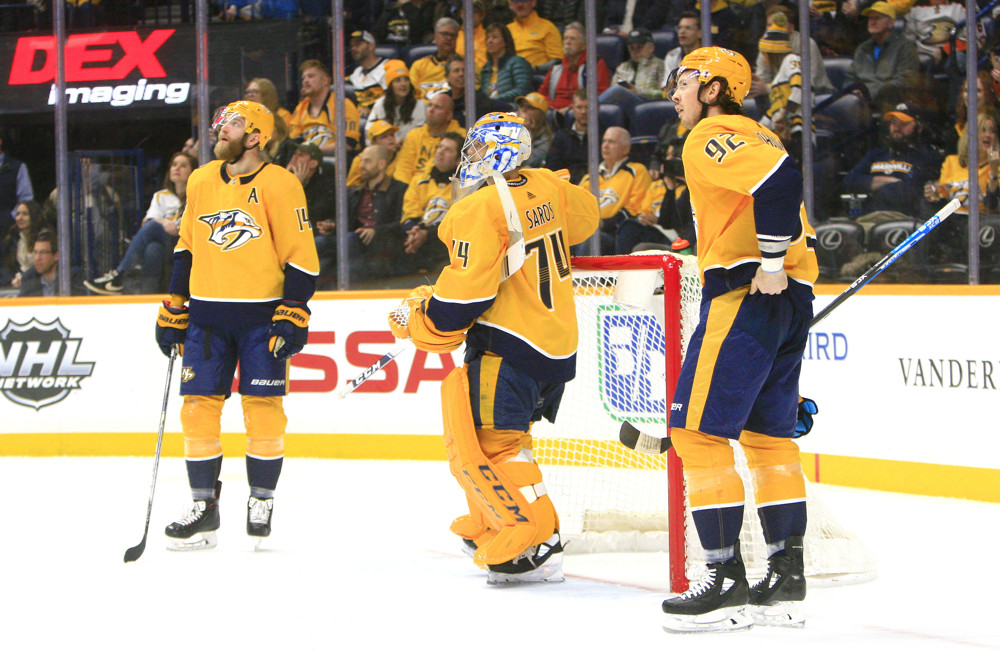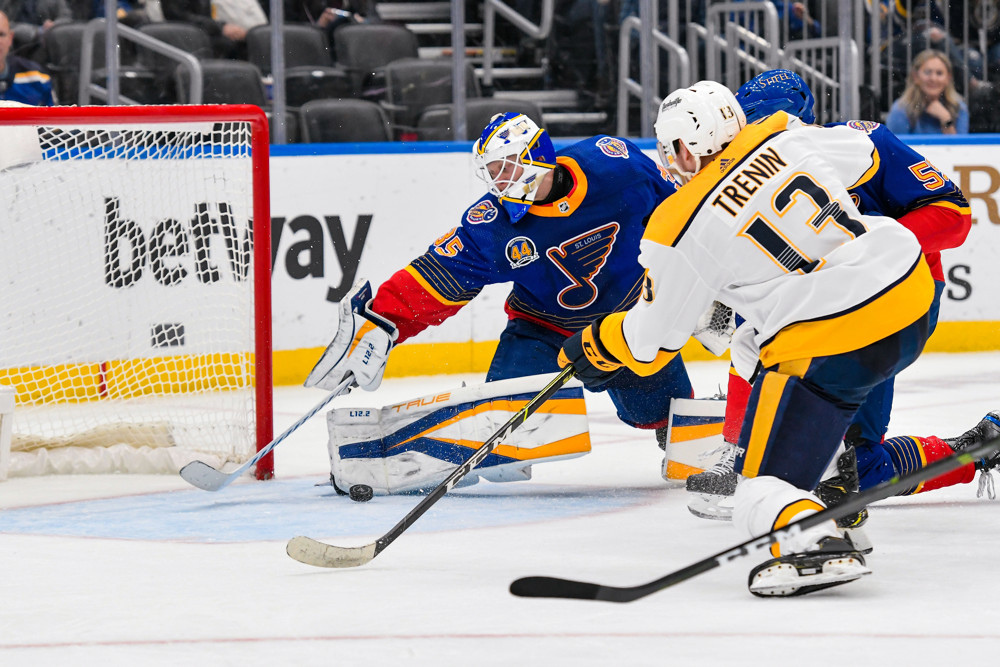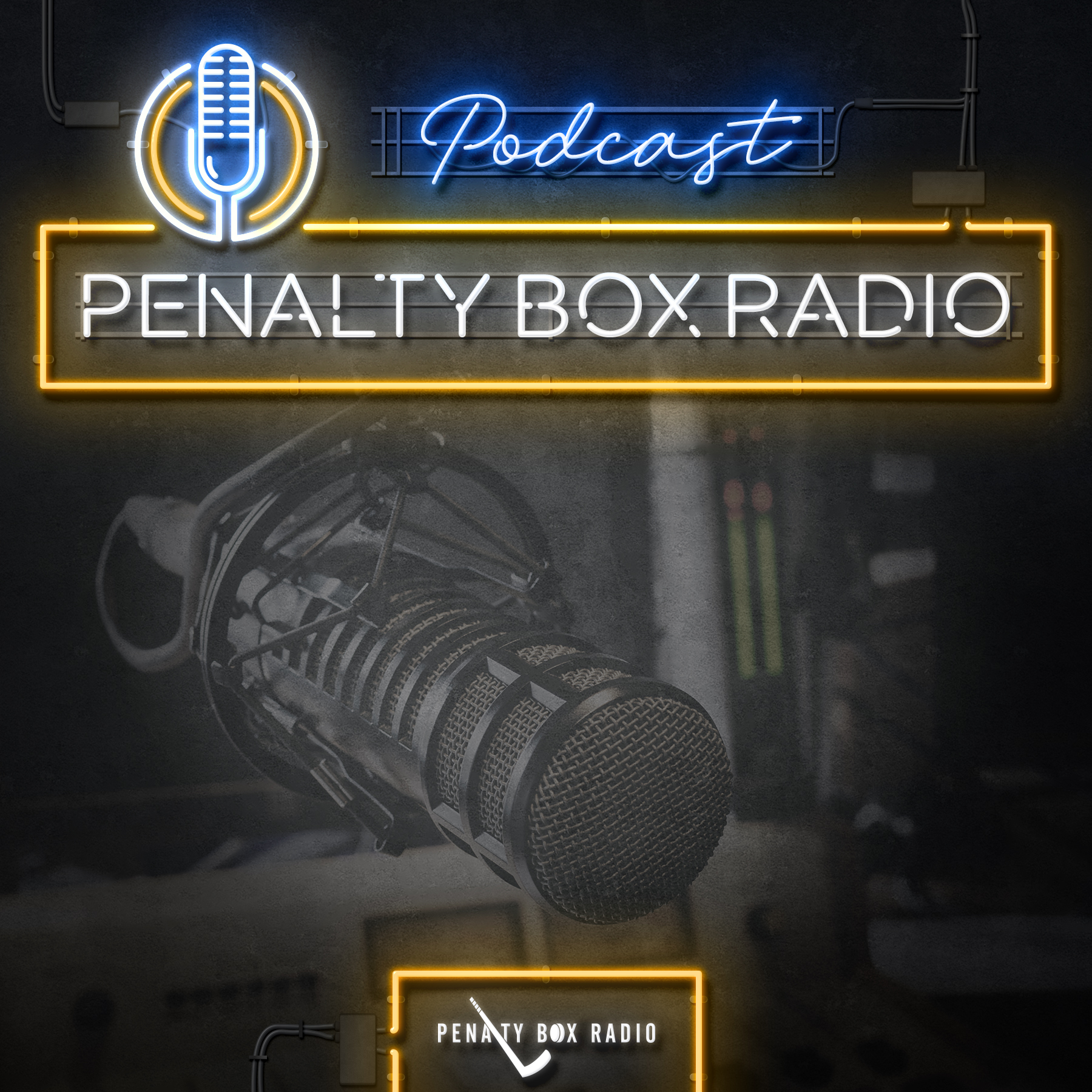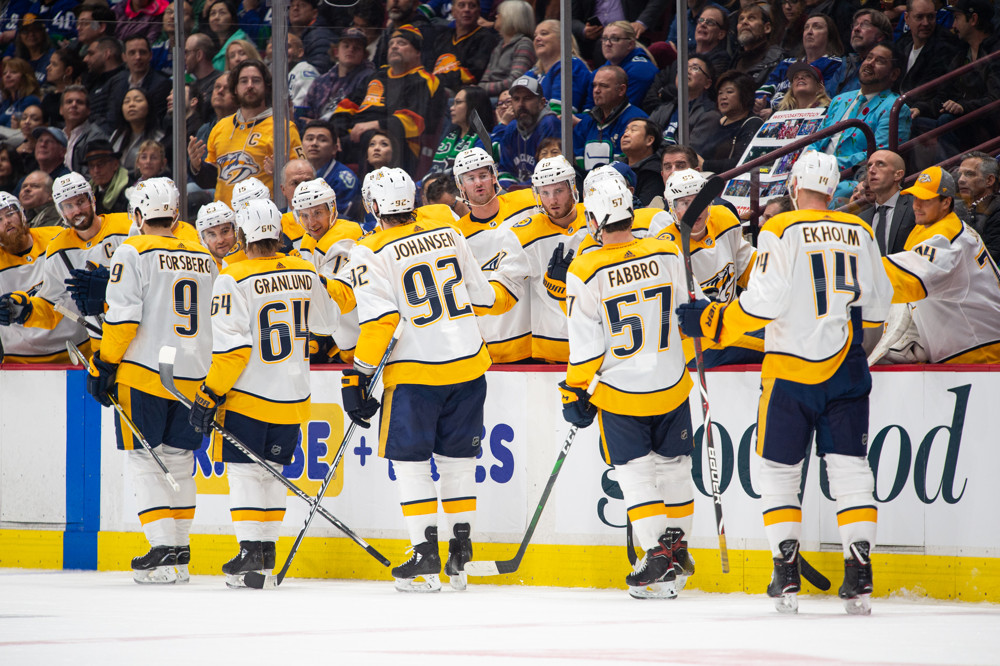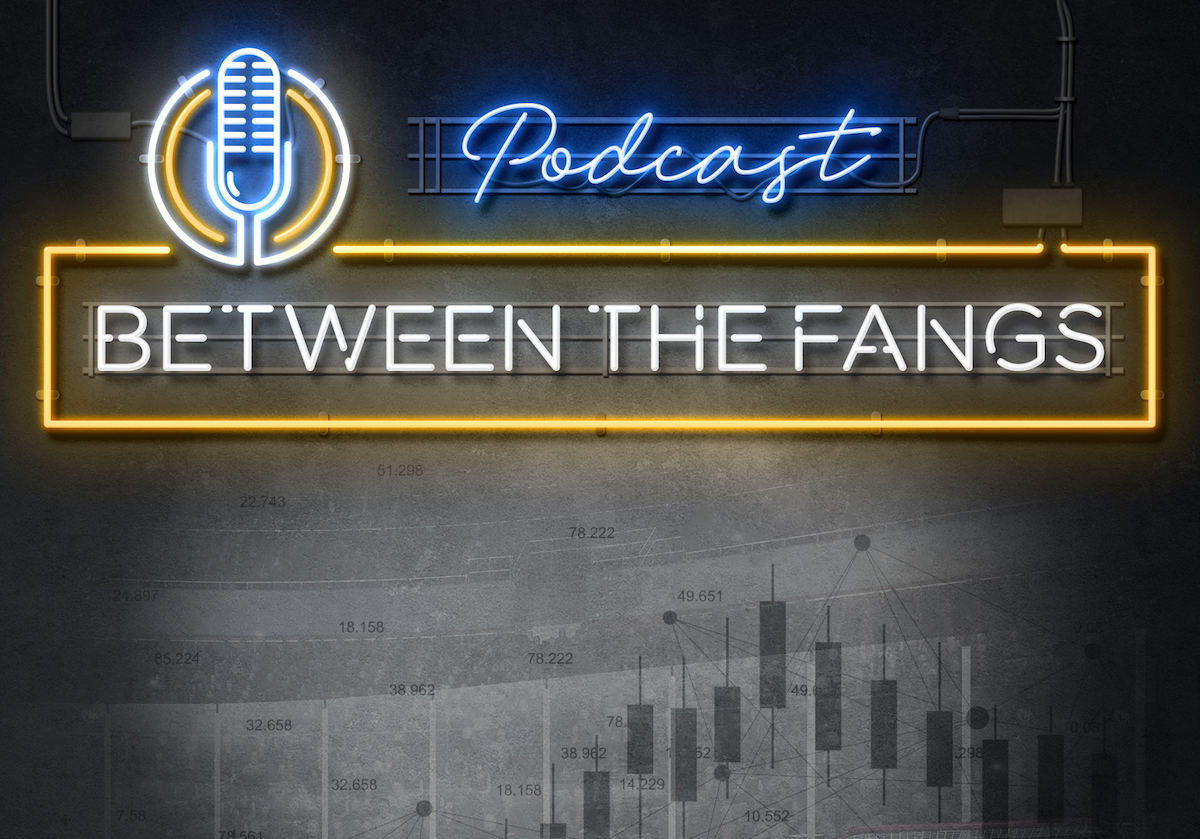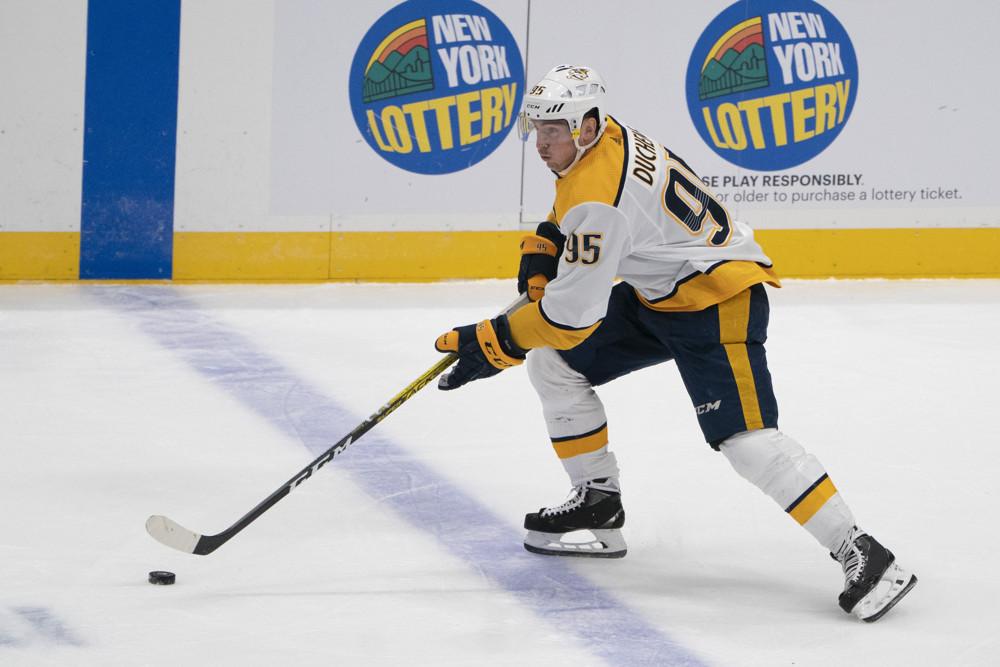
It’s no secret that this season hasn’t lived up to expectations for the Nashville Predators. General manager David Poile thought he had acquired the missing piece of the puzzle when Matt Duchene put pen to paper on an eight million dollar per year deal. Alas, nothing is ever that simple.
While the Predators have some strong underlying numbers on defense, the offense has stayed mostly average despite some incredible shooting luck spread among the bottom six forwards. And while the defense has remained steadfast, a strength has transformed into a major weakness. Juuse Saros and Pekka Rinne are currently stuck in a rut eerily similar to what happened to the NBA stars in the 90’s movie, Space Jam.
As things have deteriorated on the ice, so have they off the ice. A die-hard fanbase is clamoring for change and victory, and I think everyone is feeling the heat. Eventually, two coaches were torched and now John Hynes has his hands on the steering wheel.
I won’t discuss Hynes’ lineup choices or his systems. After all, he’s been head coach for under two weeks and 10 games. It’s clear he hasn’t had enough time to really put his stamp on this squad, and there’s a chance he won’t until training camp.
What I will discuss is the Predators so far. There have been some achievers like Nick Bonino and Roman Josi, but there’s also some who have fallen flat on their faces. Let’s spend some time talking about who’s been the biggest disappointment by position, that is, who makes up the first line of the 2019-2020 season disappointment Predators.

Please don’t be mad if you don’t see your favorite whipping boy on the block, I just had to choose the five worst under-performers. If I missed someone you feel strongly about, just know that I probably think they’re not doing very well either. That said, there are some players who are bad, but I expected them to be bad, à la Austin Watson. He won’t make an appearance because his performance isn’t disappointing, it’s just who he is as a player.
All stats below are at five on five unless explicitly stated otherwise and are correct as of January 29th, the year of our lord 2000 plus 20.
Bring Back My Joey To Me
I figured starting at center made the most sense, but boy does it hurt. Ryan Johansen has been my second most favorite player of this iteration of the Predators and it hurts to say how bad he’s been.
Sure, he still does some things well, but too many things have dropped off since last season. His team-leading passes to the slot and slot pass completion percentage don’t make up for the fact he only has 29 points, 15 at five on five, in 49 games. You simply need more from a first-line center.

Even looking past Johansen’s dreadful simple numbers, his underlying stats don’t leave much hope. His Corsi, shot share, and expected goal share are all outside the top fifteen on the team. Worse yet, his expected goal share, scoring chance share, and high danger chance share are all below 50%. That means the Predators are allowing more chances against than they’re receiving with Johansen on the ice.
I honestly have no idea what happened to the former all-star. Johansen put up an incredible 2018-19 season after injuries left him with a revolving door of linemates. He stepped up in a major way and had the best season of his Predators’ tenure.
Usually when a fall off like this happens, there’s a lot of bad luck involved but that isn’t the case here. Johansen ranks 10th on the team with five expected goals yet is outscoring that by two. On top of that, he’s shooting at 13.21% and has an on-ice (team) shooting percentage of 8.39, a little unlucky but not too far out of the ordinary.
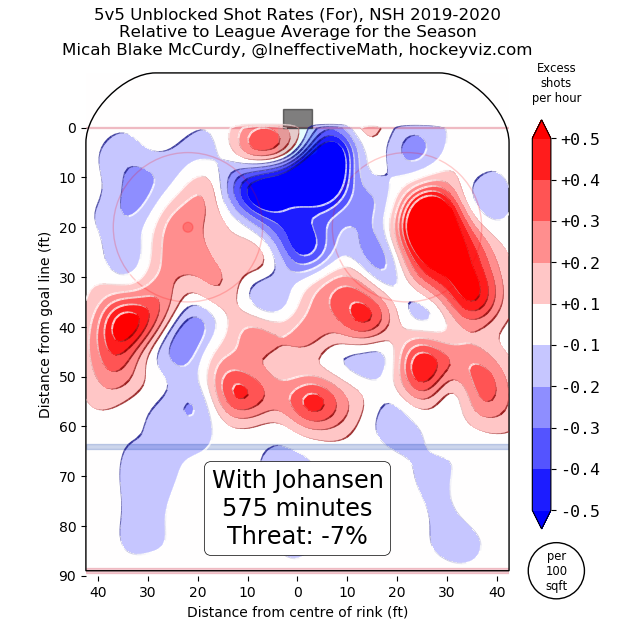
The Predators just can’t create any offense with Johansen on the ice. He’s not driving play as he has in the past, and it’s affecting all those around him. I can’t even use micro stats to cover this up, as his play in transition is mediocre on a poorly skating Predators squad. Even his puck battle win percentage is 50.7. It’s fine, but not anywhere near what a player of his caliber should be doing.
To be perfectly honest, I could put every other center besides Bonino here. All three of Johansen, Kyle Turris, and Matt Duchene have been lackluster for large parts of the season. But Johansen’s large contract coupled with his play mysteriously falling off left me with no choice. I really hope Johansen turns it around, but unfortunately we have no evidence he can.
Arvy Party
Nashville’s relationship with Viktor Arvidsson has taken an interesting turn this season. Everyone still loves him and rightfully so, he’s a good player and quite adorable, but his season is hasn’t gone the way many thought it would.

Arvidsson’s strength has come from shooting the puck. He and Craig Smith are two of the best volume shooters in the NHL over the past few years, but this season has been different. 2018-19 saw Arvidsson finish fifth in the NHL with 11.35 shots per 60, but now he sits fifth on the Predators with 8.37.
Besides that, Arvidsson’s goals per 60, scoring chances per 60, and high danger chances per 60 are all down this season. So what’s wrong with him?
The answer could be that Johansen’s decline has affected him more than any of us care to admit and the removal of Filip Forsberg as a consistent linemate hasn’t done the tiny Swede any favors. I think a lot of it stems from the decline in chances off the rush though.
Arvidsson created .98 attempts off the rush per 60 last season, but that’s dried up to a meager .39. That’s less than players not known for rush chances, like Ryan Johansen and Matt Irwin.
This combination of fewer chances off the rush and worse linemates has stopped Arvidsson from doing what he’s good at. That is, he’s great at getting to the slot and finding himself an opening. Now he plays much more in the corners because he doesn’t have Forsberg to enter the zone and Johansen to establish meaningful possession. Arvidsson’s responsibilities have shifted and it’s hurt his play.
A lot of what I see night and night out from Arvidsson is mediocrity. His transition stats have taken a big hit from last year, and while I believe it’s because he’s now the “number one” option on his line, it doesn’t excuse his inability to exit or enter the zone with possession. His slot passing stats are average, and that’s fine, but what’s weirdest is he only has five slot passes received in the 30 or so games I’ve tracked. This is an area where he should be leading the team, especially with Johansen having the most slot passes. I won’t even discuss his pucks battles won vs lost because it’s a bit depressing. You’d expect a player with his motor to do a better job, but this year has shown otherwise.
I understand why they keep shuffling Forsberg around (because no line without him or Bonino is a scoring threat). But I think that keeping Arvidsson and Forsberg together is probably the best move, especially seeing as they haven’t tried Johansen with Granlund for that long. Speaking of which…
Granny Shots
*In extremely Principal Skinner Voice* Were we too hard on Kevin Fiala? No, he brought it upon himself.
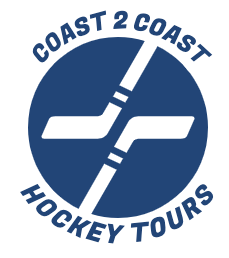
Mikael Granlund had a tough time transitioning from the Minnesota Wild to the Predators last season. His numbers dropped and his offense dried up, but I wasn’t ready to write him off. There were so many factors involved, so I was more than happy to reserve my judgment until he had settled in with his new squad.
After half a season as a Predators regular, I can safely say that I’m underwhelmed. His defensive numbers look fine according to hockeyviz.com, but his offensive numbers have fallen off a cliff. Him and Duchene look like a good pair on paper but their styles haven’t clicked in the way that many had hoped and if Forsberg isn’t their third linemate, forget about scoring.
The 27-year-old Finn currently has 18 points in 43 games at all strengths and is on pace for just over 36 points. That’s less than half of what he scored in his last full season with the Wild, an objectively worse offensive team. At the very least, 14 of those points have come at five on five, and 10 of those have been primary. All of Granlund’s on ice numbers are positive, except goal share, but that has more to do with goaltending.
Otherwise, most of Granlund’s numbers are fairly mediocre. He exits the zone with possession around 50% of the time, but can’t enter the zone to save his life, about 37.8% of the time. Duchene and Forsberg do a lot of the heavy lifting in this regard, although they also do all of the heavy lifting when Granlund is on the ice.
I’m about to sound like an old school hockey man, but Granlund strikes me as a soft-ish player. He doesn’t go the slot with regularity nor does he do a good job of getting the puck there. That said, I also think it’s incorrect to call him a perimeter player though, as he fails to hold the puck with any certainty along the boards, as evidenced by how he wins 39.2% of puck battles.
I feel like a jerk, but Granlund hasn’t meshed nearly as well as I thought he would. His mediocre play stings even worse when he shows us flashes of brilliance, like his superb goal against the Maple Leafs.
His recent string of good games aside, Granlund has spent the first 45 games or so not playing super well. His offensive isolate is good but for whatever reason, the numbers haven’t followed. Hopefully, these last few games have been a sign of a player fitting into a new system rather than a random hot streak. I think him and Johansen mesh well with their style of play, but most of all it’ll hopefully allow Granlund a little more time and space. Granlund is a great player, this season just hasn’t necessarily reflected that. Hopefully, that’ll change from here on out.
Mattias Ekholm
This one hurts for obvious reasons. I’ve admired Ekholm for about five seasons now, let’s just say I have a love affair with shutdown defenders. Guys like Jaccob Slavin and Hampus Lindholm are my favorite in the NHL. They do a thankless job while guys like Roman Josi and Brent Burns get the majority of the love.
Still, my love for Ekholm hasn’t hidden his obvious shortcomings. Replacing P.K. Subban, even he was in the twilight of his prime, with rookie Dante Fabbro was bound to have growing pains, but I didn’t think it would be to this extent. What made Ekholm and Subban so devasting was their ability to counter an opponent’s possession and then move the puck quickly. The thing was that their defensive zone dominance was a combined effort while Subban did most of the work in transitioning the puck. His departure left a hole that I wasn’t sure Ekholm could fill.
Ekholm’s past numbers in transition are bad and Fabbro had too tiny a sample size to draw off of. My hope was Ekholm would step up but this hasn’t been the case. He currently leads the Predators in non-possession (NP) exits as well as failed exits, both in raw numbers and per 20 minutes played. In fact, Ekholm’s 128 dump outs beat second place by 23, and no other Predator has more than 95 NP exits.
Unsurprisingly, Ekholm also leads in NP entries, aka a dump in. Part of the problem is the Predators scheme revolved around the defense doing the most work in moving the puck. So, even when Ekholm moves the puck with possession, he still can’t crack that darn offensive blueline, as he also leads the team in failed entries.
His struggles aren’t just confined to micro stats though. Despite posting a positive shot attempt share, shot share and expected goal share, all of his numbers are down compared to previous years by multiple percentage points. Part of this is having a green rookie by his side, but Ekholm isn’t safe from criticism.
When I think of Ekholm, I think of a huge dominating defenseman that has a bit of a temper. Well, he’s huge, at least, but he isn’t nearly as dominating as I thought. Ekholm has only won 36 of the 97 battles I’ve recorded him engaging in, a win percentage of 37.1 about four percent lower than the Predators’ average of 41.3%.
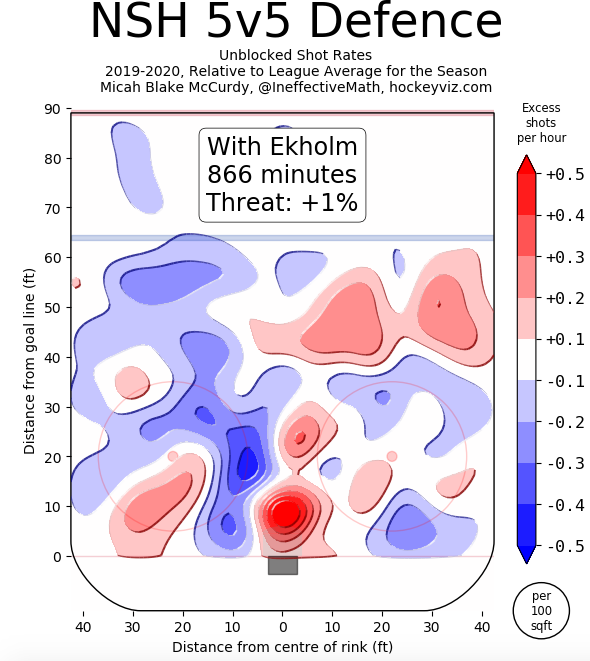
You know something is wrong when the Predators are better defensively without Ekholm on the ice. He’s been consistently beaten in the corners and allowed more passes to the slot than he’s broken up. Ekholm’s calling card has become a bit of a headcase in what can only be described as a disappointing season for the Swedish defenseman.
Matt Irwin/Yannick Weber/Any Third Pair Defenseman
All these guys are bad, it’s not a secret. We don’t expect much, but dear lord has no one on the bottom paired played anywhere near replacement level.
Juuse Saros
What else is there to say about Juuse Saros? This was supposed to be his year and it hasn’t gone anywhere according to plan. Pekka Rinne hasn’t been great either, but that’s a little more expected for a goalie closer to 40 than 30. His issues were bound to come up sooner rather than later, unless Rinne actually did discover the fountain of youth.
Thus, the disappointing role is being filled by Saros, who was expected to put up better numbers than he has. His .907 save percentage is worse than league average and his -5.04 goals saved above average is 14th worst in the NHL.
Saros struggles with the obvious problem, he’s not very good from in close. His low danger and medium danger save percentages are fine, it’s his .763 high danger save percentage that’s killing his numbers. It’s near the basement as Saros’ high danger save percentage is the third worst among goalies that have started more than three games.
Saros’s stumble has been sad to see. He’s been the goalie of the future for years now, and it’s unfortunate to see him not take advantage of the opportunity provided to him.
His place among the all-disappointment line is well earned, and hopefully like the rest of the five players, not permanent.


